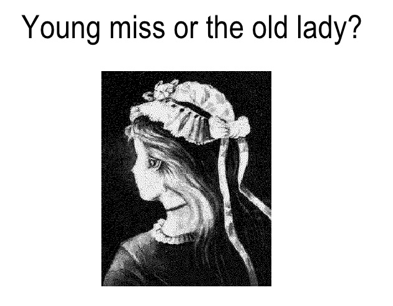 Marketers have used psychology to influence the behavior of customers for years – often with great success.
Marketers have used psychology to influence the behavior of customers for years – often with great success.
Being aware of psychological principles is helpful whether you’re building a website, composing a tweet, or writing a blog post. Psychology indicates what colors are most likely to draw the attention of prospects or how long someone is likely to maintain interest in your message. The more you know about how the mind works, the more you can make informed decisions.
Using psychology to inform your content marketing isn’t sneaky trickery. Instead, these psychological insights can improve the user experience and help keep prospects long enough to convert.
The challenge lies in translating often complex psychological concepts into actionable steps that can drive real-world decisions. Here are five psychological principles that can help you create more effective marketing material.
It’s unlikely that you’ll need to apply each insight to every project but having these models in mind is likely to be useful when you want to create content that converts.
1. Cognitive fluency
The number of micro decisions made throughout our day is staggering. A 2012 study showed that visitors judge a website in 0.05 seconds – faster than the blink of an eye. While a 2013 study by Microsoft noted people’s attention span has narrowed to eight seconds at the max.
As a result, humans prefer to consume simplistic content and unconsciously avoid information that appears complicated. This is cognitive fluency.
That’s why people love emojis – they communicate emotion in a simple, extremely fast way. This goes for everything from tweets to blog posts – the easier your content is to understand, the more likely it is to hook your audience and keep them engaged. At the first sign of complexity, they’ll run.
Cognitive fluency explains why people like emojis – simple, fast way to communicate, says @LouisaMcGrath. Click To Tweet
What does this mean for content marketers?
- If your product is complex, explain it in basic terms.
- Make your social posts as short as possible.
- Create clear and concise calls to action.
- Focus on one topic per blog post, video, or web page.
- Use eye-catching graphics that quickly communicate your message.
- Use keywords in branded links so people know at a glance what the link will address.
- Use infographics and videos to communicate complex ideas quickly and simply.
- Use emojis if they suit your brand voice.
- Use hashtags on social media to highlight the topic of your content.
2. Social proof
Think about your personal online shopping patterns. Do you rely strictly on a retailer’s website for information? Or do you ask friends and family for recommendations? Or read a bunch of reviews before making a purchase? Do you check social media for opinions or ratings?
If you go beyond the retailer’s site, then you’re like 69% of the American population, according to Mintel’s American Lifestyles research. More than two-thirds of consumers trust the word of friends, family, and even strangers over any marketing content from a brand. This is because of the psychological principle of social proof, which essentially means people are more likely to act when they see others have done so. Whether it’s reading a post or making a purchase, people prefer to follow in the footsteps of others like them.
That is why Facebook ads can be effective.

Social proof is becoming more important as consumers’ access to online-based data and information about companies grows. Think about how you can show the thoughts of people through your content marketing.
What does this mean for content marketers?
3. Perceptual set theory
Humans are creatures of habit, and the perceptual set theory can help leverage that fact for your content marketing.
If you’ve subconsciously looked for a button to click on a landing page, you’ve experienced the perceptual set theory. You expect to see something, so you’re on the lookout for it. Your curiosity often drives you to continue down a path until you achieve resolution and satisfy your curiosity.
If you subconsciously look for a button to click, you’ve experienced perpetual set theory. @LouisaMcGrath Click To Tweet
People’s expectations are shaped by past experiences. We select what we pay attention to, infer how it works based on experience, and combine current circumstances with past knowledge to interpret what to do.
This theory is why those clever drawings attract interest – we interpret an image based on our experience.
 For marketers, keep in mind when creating content how the mind perceives situations. While it can be tempting to try something new and be off the wall, going too far beyond a prospect’s expectations may be off-putting.
For marketers, keep in mind when creating content how the mind perceives situations. While it can be tempting to try something new and be off the wall, going too far beyond a prospect’s expectations may be off-putting.
Don’t worry about coming across as promotional, people have come to expect some sort of CTA in company content. If they reach the end of your content and want to continue engaging but aren’t guided to the next step, they’ll be confused.
If readers want to continue engaging but aren’t guided to the next step, they’ll be confused. @LouisaMcGrath Click To Tweet
What does this mean for content marketers?
- Create a logical flow through your landing page to drive curiosity and fulfill expectations.
- Include an obvious call to action every time.
- Don’t overexplain. People intuitively know what a CTA is.
4. Models of persuasion
While there are many different psychological models of persuasion, Fogg Behavior Model is particularly useful when planning content.
Dr. BJ Fogg of the Persuasive Technology Lab at Stanford University was a specialist on behavior design. His model of persuasion provides a system for driving desired behavior – he believed motivation, ability, and a trigger should coincide for users to carry out an action.
To persuade people to convert, you need motivation, understanding, & a trigger, says @LouisaMcGrath. Click To Tweet
Motivation and ability are two major influences for buyers and are key to creating effective content. To motivate people, your content needs to contain strong, relevant messages. The messages also need to be easily understood – this links to the principles of cognitive fluency and perceptual set theory.
But in the Fogg Behavior Model, you also need a trigger if you want prospects to carry out an action.

What does this mean for content marketers?
- Increase motivation by providing messages relevant to your audience.
- Make messages simple.
- Include a compelling trigger or CTA to encourage an action.
- Make sure each piece of content includes motivation, ability, and a trigger.
Robert Cialdini’s principle of persuasion says that in a world of information overload, people take shortcuts when making buying decisions. Fear of missing out, social proof, and simply continuing to buy what they always have are purchasing influence factors.
The Yale model of persuasion demonstrates to marketers the importance of building a trusted brand as trust, sincerity, and authenticity affect behavior.
HANDPICKED RELATED CONTENT:
5. Psychology of color
If you ask five people what their favorite color is, what is the likelihood they’ll say the same one? Miniscule. But that doesn’t mean that leveraging color in consistent ways isn’t useful in marketing.
Recent studies suggest that people judge a new product within 90 seconds of seeing it – up to 90% of that assessment is based on color. Color is an important consideration for content marketers when designing web pages, choosing banner images, and planning videos.
People judge a new product within 90 seconds of seeing it – up to 90% is based on color via @ReelColor. Click To Tweet
Shades of blue can help build trust and loyalty with your audience. This interpretation transcends geography. Red communicates energy and passion, while yellow can communicate both warnings and cheery optimism.
If you want your brand to evoke respect for nature, stick with shades of green, while orange gives an impression of fun, excitement, and urgency.
What does this mean for content marketers?
- Consider what color can help you evoke the desired emotion from your content.
- Consistently present your brand colors in your content.
- Consider red, orange, and yellow for CTA buttons to foster a sense of urgency.
- Ensure that CTA buttons are contrasting colors so they stand out. (Here’s a color calculator to help.)

Conclusion
Applying these concepts to your projects will take time and consideration in the beginning. But before you know it, these principles will become a natural part of your content planning. Chances are you already engage in at least one of these principles in your content marketing even if it’s not a conscious choice.
Going forward, consider how you can make use of these principles to give prospects a smooth experience and move them more quickly through the sales funnel.
How many of these five psychological principles can you spot in the hundreds of presentations at Content Marketing World? You won’t know unless you’re there. Register today using code BLOG100 to save $100 on the Sept. 4-7 event.
Cover image by Joseph Kalinowski/Content Marketing Institute